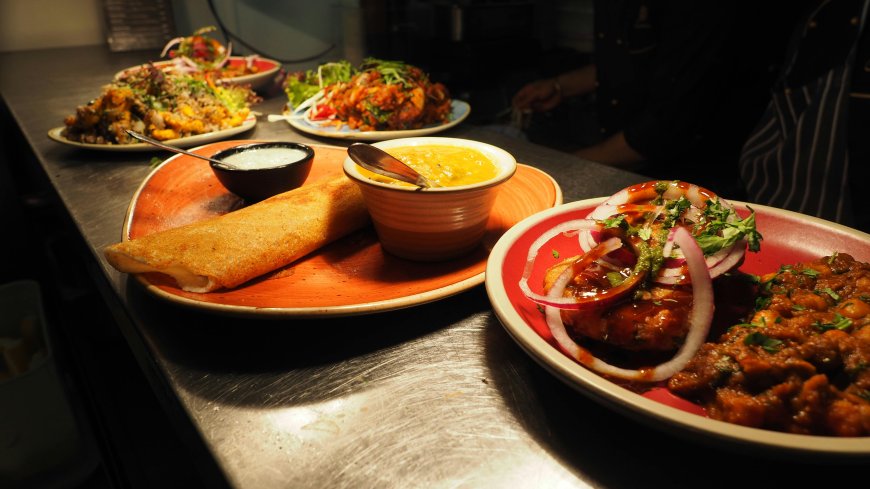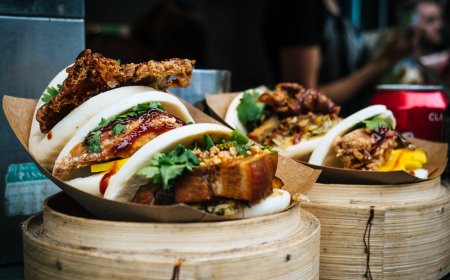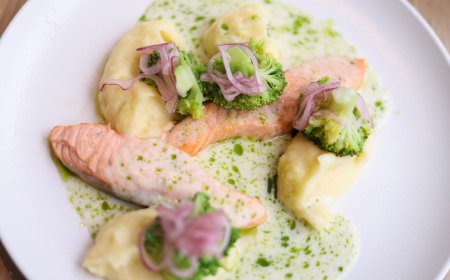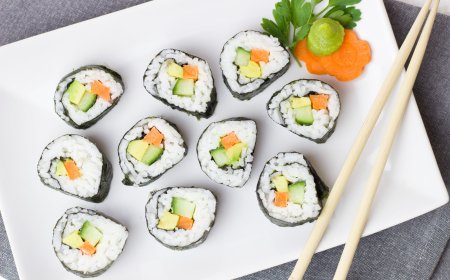The secret of spices
The secret of spices in Indian cuisine lies in the use of diverse and balanced combinations of spices and herbs that give Indian dishes a unique taste and flavor. The use of spices is a vital part of Indian cooking, adding depth and complexity to the flavor and aroma of dishes.
Indian spices are renowned for their diversity and richness, including a variety of spices such as cumin, saffron, cardamom, cinnamon, coriander, curry, pepper, ginger, and many more. These spices are used with sensitivity and precise coordination to impart distinctive flavor to the dishes, resulting in an unforgettable tasting experience.
The traditional method of using spices in Indian cuisine involves roasting and grinding them together to release their deep flavors, then adding them to dishes at the appropriate moment during the cooking process. Spices are carefully coordinated to enhance each other and achieve a perfect balance between acidity, sweetness, and heat.
The use of spices in Indian cuisine is not limited to adding flavor alone but also has health and medicinal benefits. For example, curcumin found in turmeric is believed to have anti-inflammatory and antioxidant properties, while cumin is considered beneficial for digestion.
The secret of spices in Indian cuisine lies in the use of a diverse and balanced array of spices with sensitivity and precise coordination, giving Indian dishes a taste and flavor like no other and embodying the refined art of Indian cooking.
Spicy Indian cooking in your home
If you wish to prepare spicy Indian food at home, there are several steps you can follow to do so easily and successfully. Cooking spicy Indian food at home requires using spices correctly, carefully coordinating flavors, and considering the desired level of heat for the dishes. Here are some tips to get started
1. Use the right spices: Choosing the appropriate spices is crucial in cooking spicy Indian food. Look for famous Indian spices like cumin, curry, coriander, and turmeric to achieve the distinctive flavor of the dishes.
2. Prepare the base: The base of spicy Indian cooking often involves using onions, garlic, and ginger as a base for sauces and dishes. Sauté these ingredients together in moderately heated oil until they become golden brown.
3. Control the heat level: The taste of spicy Indian food can be greatly affected by the heat level. Make sure to regulate the heat appropriately to avoid adding excessive heat and to prevent burning the spices.
4. Experiment and adjust: The flavors in spicy Indian cooking depend on the balance of spices and other ingredients. Therefore, don't hesitate to taste the food while cooking and adjust the ingredients if necessary to achieve the perfect flavor.
5. Serve with Indian side ingredients: You can serve spicy Indian dishes with traditional side ingredients such as spiced rice and Indian naan or roti.
6. Innovate and experiment: Don't be afraid to experiment and prepare new Indian dishes at home. Explore and innovate using your favorite spices and ingredients for a fun and exciting cooking experience.
By using these tips, you can achieve an amazing spicy Indian cooking experience at home, allowing you to enjoy the rich flavors and delicious tastes of Indian cuisine with ease and convenience.
Enchanting spices
The enchanting spices represent the heart and soul of Indian cuisine, where they are indispensable in preparing the delicious and distinctive dishes for which this wonderful cuisine is known. Indian spices are characterized by their unique diversity and richness, adding a special flavor and distinctive taste to dishes as soon as they are added.
In Indian cuisine, carefully selecting and coordinating spices is crucial to achieving rich and balanced flavors. The list of famous Indian spices includes a variety of ingredients such as cumin, coriander, curry, ginger, cardamom, saffron, pepper, cinnamon, and many other spices that are primarily and consistently used in Indian cooking.
Indian spices are naturally available in their raw form or after being ground into powder, allowing for a wide range of uses and experimentation. Custom spice blends can also be prepared consisting of harmonious combinations of different spices, which are used to marinate meats, poultry, fish, and vegetables.
By using enchanting spices in Indian cuisine, a wonderful balance is achieved between different flavors, resulting in dishes with unparalleled taste and unmatched diversity. When the influence of enchanting spices combines with the unique skill of Indian cooking, exceptional cooking experiences arise, taking food enthusiasts on an unforgettable tasting journey.
Enchanting spices are the secret and magical element in Indian cuisine, giving foods the flavor and taste that distinguish them from others and making the experience of eating Indian food an unforgettable taste adventure.
Indulge in the pleasure of spices in spicy Indian cuisine
Indulging in the delight of spices in spicy Indian cuisine represents a unique and enjoyable experience that transforms food into an unforgettable tasting adventure. Indian cuisine is characterized by the meticulous and harmonious use of its spices to impart rich and deep flavors to dishes, making each meal a sensory delight and a pleasure for the palate.
When you indulge in spicy Indian cuisine, you feel the impact of enchanting spices on your senses from the very first moment. A variety of balanced spices are used in Indian cuisine, such as curry, coriander, ginger, cumin, cardamom, cilantro, pepper, and saffron, to create unique and diverse flavor profiles.
What sets apart the enjoyment of spices in spicy Indian cuisine is its perfect balance of acidity, sweetness, and spices. Flavors blend seamlessly, with the gentle acidity of tomatoes and lemon juice mingling with the sweetness of onions and garlic and the warm spices of curry, creating a taste experience like no other.
When these enchanting spices mix with other ingredients such as meats, vegetables, or rice, spicy Indian dishes turn into a unique tasting story, offering connoisseurs a blend of rich and diverse flavors that take them on a remarkable cooking journey.
In addition to the wonderful flavors, indulging in the delight of spices in spicy Indian cuisine also presents an opportunity to enjoy health benefits. Spices like curcumin in turmeric, cilantro, and ginger have anti-inflammatory and antioxidant properties that may contribute to overall health.
Indulging in the delight of spices in spicy Indian cuisine is an unparalleled taste experience, where spices are used meticulously and harmoniously to create flavorful dishes that take connoisseurs on a remarkable cooking journey in the world of Indian cuisine.
The taste of India
The taste of India represents a unique and distinctive culinary experience that embodies the diversity and richness of Indian cuisine, where rich flavors and unique spices harmonize to create unforgettable tasting experiences. Indian cuisine is considered one of the most diverse in the world, bringing together a wide range of foods and diverse culinary traditions that reflect the diversity of cultures and the rich history of India.
The taste of India is characterized by its unique diversity, where people can taste a wide variety of flavors that range from acidity to sweetness to spiciness. Indian spices are effectively used to impart rich and deep flavors to dishes, enhancing the dining experience with distinctive flavors.
Most Indian dishes include a base of basic spices such as cumin, coriander, curry, ginger, garlic, and onion. These spices are skillfully blended together to create a perfect balance of flavors, giving the food depth and complexity in taste.
Among the prominent examples of the taste of India are spicy dishes like Vindaloo and Curry, which are known for their perfect balance of heat and flavor. Indian menus also include sweet dishes like Gulab Jamun and Ladoo, reflecting the natural sweetness of Indian spices.
In addition to the rich flavors, the taste of India also reflects the immense cultural diversity in the country, where dishes are influenced by local traditions and rich history. Dishes vary from region to region, reflecting the cultural and geographical diversity of India.
The taste of India represents a unique cooking and tasting experience characterized by diversity and richness, where unique flavors and tastes come together to achieve an unparalleled cooking and tasting experience. Indian cuisine is a symbol of this wonderful diversity and rich history embodied in every bite of its dishes.
Summary
Famous and spicy Indian dishes are an integral part of the diverse and rich heritage of Indian cuisine. Indian cuisine is considered one of the most diverse in the world, known for its rich, balanced flavors, and unique spices.
Famous and spicy Indian dishes include a variety of dishes such as curry, vindaloo, biryani, and samosas, which are characterized by a perfect balance of acidity, sweetness, and heat. A variety of Indian spices like cumin, curry, coriander, and ginger are used to add rich and deep flavor to these dishes.
Eating famous and spicy Indian dishes is a unique culinary and tasting experience, allowing people to enjoy the diversity of flavors that reflect the cultural and geographical diversity of India. These dishes are emblematic of India's rich culinary heritage and serve as expressions of art and culture in Indian cuisine.
sources
1. Indian Recipes Website
- Offers traditional and modern Indian recipes with a special focus on spicy foods.
2. BBC Good Food Website
- Features a variety of delicious Indian cuisine recipes with instructions and tips for proper preparation.
3. Live Indian Website
- Provides recipes and articles about tasty Indian cuisine, including spicy and flavorful dishes.





































































































































































